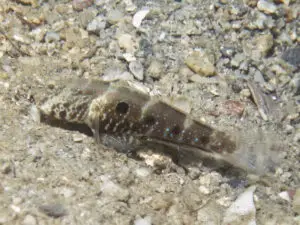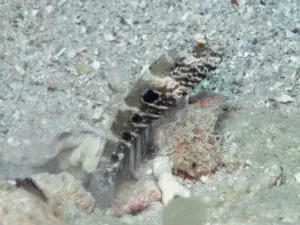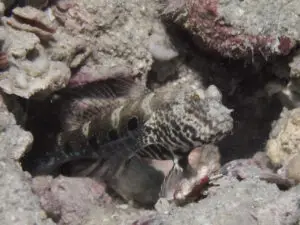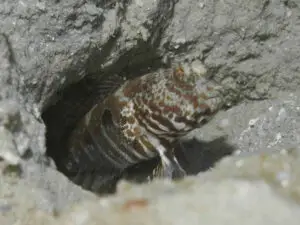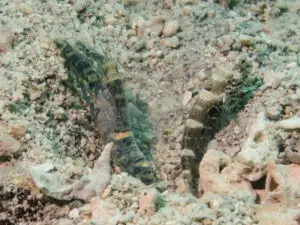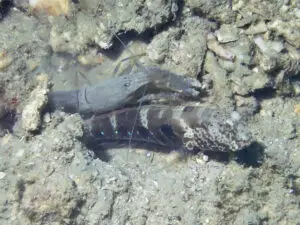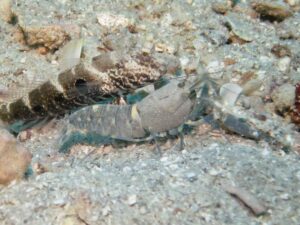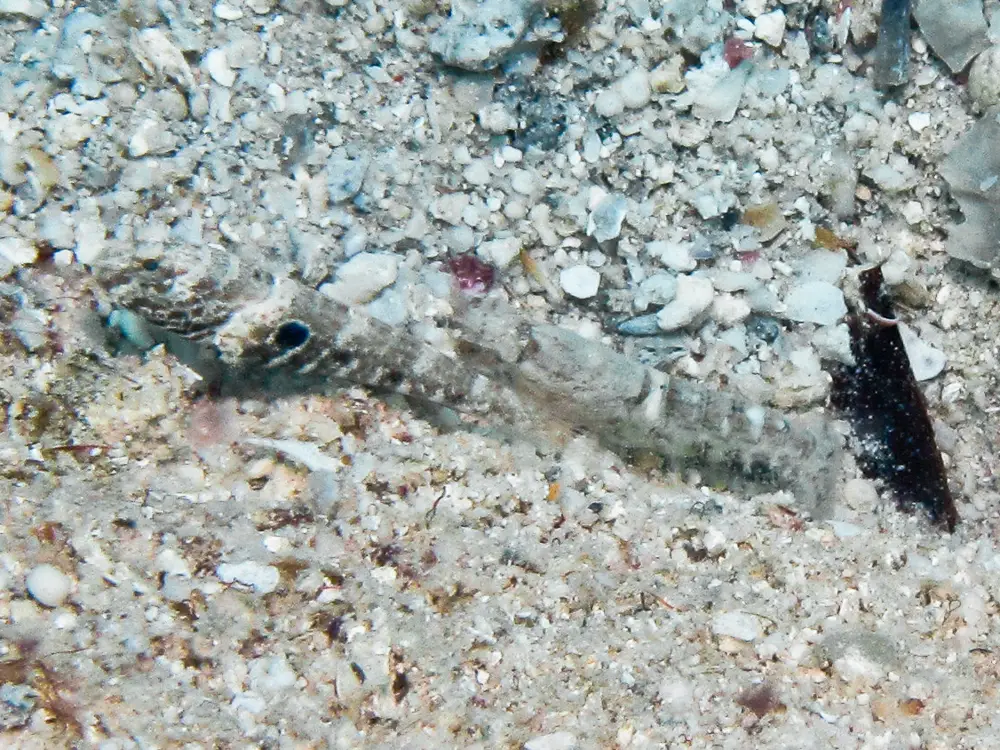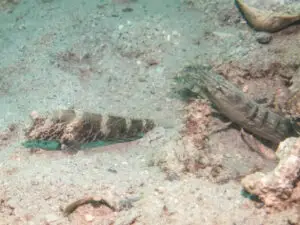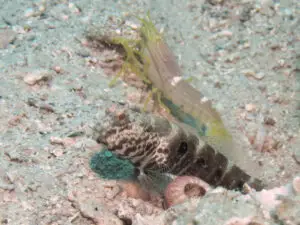Target Shrimpgoby
Cryptocentrus strigilliceps
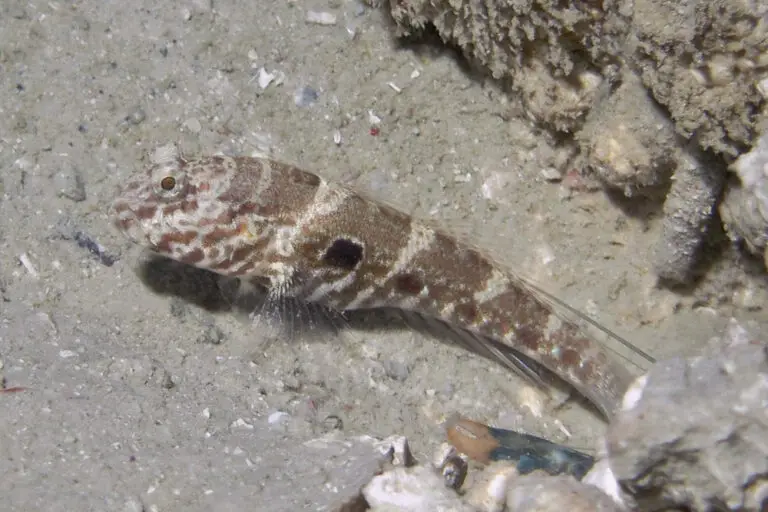
Target Shrimpgoby
Cryptocentrus strigilliceps
(Jordan and Seale, 1906)
Description
Body design
This is a small goby around 8 cm long. It is pale brown with a series of black target-like circles along the body just below the mid-lateral line. The foremost of these is more prominent but in appropriate light all are surrounded by iridescent blue spots. The background colour of the body below the mid-lateral line is dark brown. Running vertically down from the fore and aft edges of the white outlines of the ‘targets’ are white lines that reach the ventral surface.
Above the mid-lateral line, the base colour is a lighter brown. It is crossed by conspicuous white bars, the one at the level of the pectoral fins being the most conspicuous.
The head is paler than the rest of the body. The cheek is pale with brown spots behind the eye coalescing and becoming fine dark bars on the gill cover. The nostrils are elongated and tubular
Fin design
The first dorsal fin is triangular, transparent with alternating spots of brown and white on the fin rays. The second dorsal fin is rectangular and similarly patterned. The pectoral fin has its origin in a brown-spotted white area lying behind the gill cleft. it is transparent. The pelvic fins have a bright white base and are then vertically barred in brown and white. The anal fin is rectangular with vertical brown and white bars. The caudal fin is transparent with fine brown flecks on the fin rays.
Diagnostic features
The white dorsal bars and the white-outlined black targets are the best identification features.
Similar species
Several gobies of this genus have a similar look but this is the most widespread and is the one you usually find in the patch reefs and overhangs.
The main similar species to consider are
C leucostictus and C maudae which do not have the row of ‘targets’.
Cryptocentrus nigrocellatus, the Blackspot Shrimpgoby has a single ocellated spot just in front of the pectoral fin.
Cryptocentrus caeruleomaculatus has more conspicuous iridescent blue spots and less contrasting head markings.
Natural History
Habitat
Typically they live in conditions where there is silty substrate extending right up to rocky reefs and bommies. They particularly favour small areas of silty sand surrounded by rocky reefs and littered with large pieces of dead coral. This is usually in shallow water, but they are also found down to 10 metres provided there is silt adjacent to a bommie or reef.
This dense substrate determines shrimp associations and the usual partners are shrimps that normally live at greater depths. Shallow water shrimps may form associations where the silt incorporates rubble and shell debris.
Behaviour
Although well hidden by their cryptic markings they are cautious and seldom are seen fully out of the burrow. They retreat further into the burrow at any suggestion of disturbance. This is particularly true of those living in the shallows. Those living at depth seem to move more freely outside the burrow. Possibly in this situation, they are visible at a greater distance before they have become aware of the diver.
Distribution
Published distribution:
Indo-West Pacific. Oman, East Africa to Australia and Samoa, north to the Marshall Islands and Ryukyu islands.
Our records
Australia; Fitzroy Island, Low Isles, Lizard Island, Ribbon Reefs, Great Barrier Reef.
Solomon Islands; Gizo, Guadalcanal, Nggela, Santa Isabel and Kolombangara Islands.
Associated Shrimp species
Associated Shrimps (seven shrimps)
Chocolate Chip Snapping Shrimp, Alpheus species 2
Dark Marbled Snapping Shrimp, Alpheus macellarius
Grey Snapping Shrimp, Alpheus species 5
Pale Marbled Snapping Shrimp, Alpheus djiboutensis
Tasselled Snapping Shrimp, Alpheus species 14
Titan Snapping Shrimp, Alpheus species 15
Yellow Pyjama Snapping Shrimp, Alpheus ochrostriatus


